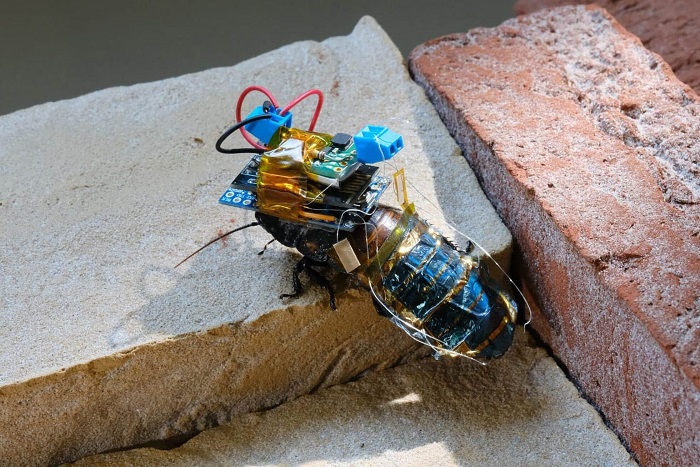ISABEL RUBIO ARROYO | Tungsteno
Cyborg beetles, cockroaches or dragonflies that can enter spaces inaccessible to humans could be useful for rescuing survivors of earthquakes and other emergencies, or for inspecting dangerous areas to detect gas leaks, for example. We investigate the potential and challenges of integrating technological components into these living organisms.
From rescue missions to hazardous site inspections
Cyborgs have the potential to perform functions beyond the normal capabilities of the organism, according to research published in the scientific journal Nature. "If we think about the insect functions that animals can't do, that inspires us to think about what smaller, insect-scale robots can do that larger robots cannot," Kevin Chen, an assistant professor of electrical engineering at MIT, told The Washington Post.
The idea of creating such cyborgs is not new. In 2006, the US Defense Advanced Research Projects Agency (DARPA) asked US scientists to submit "innovative proposals to develop technology to create insect-cyborgs." In 2009, researchers at the University of California at Berkeley announced that they had successfully implanted electrodes in a beetle to control its movements in flight. "We demonstrated the remote control of insects in free flight via an implantable radio-equipped miniature neural stimulating system," they explained in a paper published in the journal Frontiers in Integrative Neuroscience.
In recent years, several researchers have attempted to create cyborg insects with tiny integrated circuits to control their behaviour for urban search and rescue missions, environmental monitoring, hazardous site inspection and even crop pollination. While some scientists are building complete microrobots that mimic the movement and size of real insects such as bees, others are putting electronic devices into living insects such as dragonflies and trying to control them.
The DragonflEye project aims to turn dragonflies into a kind of drone. Credit: Quartz
Challenges for 'cyborg' insects
Electronic sensors are getting smaller and better, and manufacturing techniques are becoming more sophisticated. But there are still some challenges to overcome. One of the potential limitations of these cyborgs is the volume and weight of the batteries. In theory, this could be overcome by having the robots return to designated recharging points before the batteries run out, or by powering the batteries wirelessly.
This is according to a team of researchers who claim to have developed a rechargeable cyborg insect that uses a kind of soft backpack with an ultra-smooth organic solar cell module that does not affect its ability to move. The tests, details of which have been published in Nature, were carried out on the Madagascar hissing cockroach (Gromphadorhina portentosa), which is wingless.
Cyborg cockroaches could help find survivors in emergency situations. Credit: Riken
"The batteries inside small robots run out quickly, so the time for exploration becomes shorter," Kenjiro Fukuda, the researcher who led the investigation, told Reuters. A key advantage of this technique is that "when it comes to an insect's movements, the insect is causing itself to move, so the electricity required is nowhere near as much."
However, some experts question the impact of such technologies on the welfare of these animals. Jeff Sebo, a professor of animal bioethics at New York University, is concerned about how live insects might feel when they are controlled by humans while carrying heavy technology. Whether they feel pain or distress is unclear, he explains, but that doesn't mean humans should ignore it. "We’re not even going through the motion of having laws or policies or review boards in place so that we can half-heartedly try to reduce the harms that we impose on them," he adds.

Some researchers suggest sending small shocks into the cockroaches' abdomens to control them. Credit: Riken English Channel.
While the promises of some researchers are encouraging, most of the advances are still in the research phase, years away from commercialisation. But, as Chen points out, keep in mind that ten years ago, all this "sounded more like science fiction." Some of his current predictions also sound like something out of the distant future. He imagines a swarm of robots that mimic lightning bugs or bees and pollinate crops in vertical farms or even in space. In the latter scenario, "a flying robot would be much, much more suitable than sending bees". Only the future will reveal whether his predictions come true or ultimately remain in the realm of imagination.
· — —
Tungsteno is a journalism laboratory to scan the essence of innovation.
